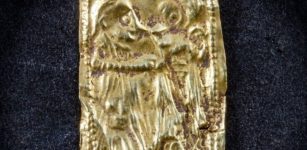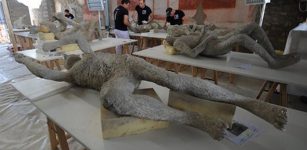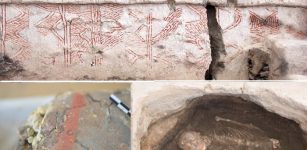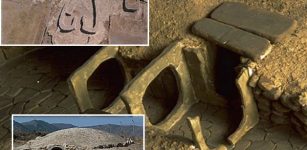Artifacts From King Henry VIII’s Warship The Mary Rose – Analyzed
Conny Waters – MessageToEagle.com – 21st century X-ray technology has allowed the University of Warwick scientists to peer back through time at the production of the armor worn by the crew of Henry VIII’s favored warship, the Mary Rose.
Three artifacts believed to be remains of chainmail recovered from the recovered hull have been analyzed by an international team of scientists led by the Universities of Warwick and Ghent using a state-of-the-art X-ray facility called XMaS (X-ray Materials Science) beamline.
By using several X-ray techniques available via the XMaS beamline to examine the surface chemistry of the links, the team was able to peer back through time to the armor’s production and reveal that these links were manufactured from an alloy of 73% copper and 27% zinc.
“The results indicate that in Tudor times, brass production was fairly well controlled and techniques such as wire drawing were well developed,” Emeritus Professor Mark Dowsett from the University of Warwick’s Department of Physics said in a press release.
“Brass was imported from Ardennes and also manufactured at Isleworth. I was surprised at the consistent zinc content between the wire links and the flat ones. It’s quite a modern alloy composition.”
The exceptionally high sensitivity analysis revealed traces of heavy metals, such as lead and gold, on the surface of the links, hinting at further history to the armor yet to be uncovered.
 Image of one of the chainmail links – the cleaned and conserved link. Credit: Mark Dowsett
Image of one of the chainmail links – the cleaned and conserved link. Credit: Mark Dowsett
with permission from the Mary Rose Trust
Professor Dowsett explains: “The heavy metal traces are interesting because they don’t seem to be part of the alloy but embedded in the surface. One possibility is that they were simply picked up during the production process from tools used to work lead and gold as well. Lead, mercury and cadmium, however, arrived in the Solent during WW2 from the heavy bombing of Portsmouth Dockyard. Lead and arsenic also came into the Solent from rivers like the Itchen over extended historical periods.
“In a Tudor battle, there might be quite a lot of lead dust produced by the firing of munitions. Lead balls were used in scatterguns and pistols, although stone was used in canon at that time.”
The Tudor warship the Mary Rose was one of the first warships that Henry VIII ordered not long after he ascended to the throne in 1509. Often considered to be his favorite, on 19 July 1545 it sank in the Solent during a battle with a French invasion fleet.
The ship sank to the seabed and over time the silts covered and preserved its remains as a remarkable record of Tudor naval engineering and shipboard life.
In 1982 the remaining part of the hull was raised and is now housed in the Mary Rose Museum in Portsmouth (www.maryrose.org) alongside many thousands of the 19,000 artifacts that were also recovered, many of which were remarkably well preserved by the Eocene clays.
After recovery, the three artifacts were subjected to different cleaning and conservation treatments to prevent corrosion (distilled water, benzotriazole (BTA) solution, and cleaning followed by coating with BTA and silicone oil). This research also analyzed the surface chemistry of the brass links to assess and compare the levels of corrosion between the different techniques, finding that all had been effective at preventing corrosion since being recovered.
“The analysis shows that basic measures to remove chlorine followed by storage at reduced temperature and humidity form an effective strategy even over 30 years,” Professor Dowsett added.
Written by Conny Waters – AncientPages.com Staff Writer











